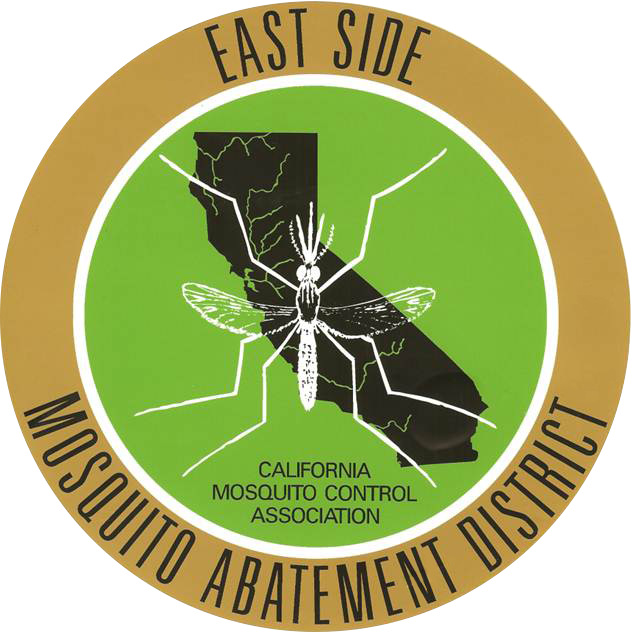Mosquito Control
Mosquito control activities are conducted o reduce adult mosquito population in a target community. To develop an effective control program takes time, planning, and preparation. Such planning requires strategies for addressing both routine operations activities and emergencies caused by the risks of mosquito-borne diseases.
The District's operational effort to control mosquitoes is largely directed by the distribution of mosquito population as dtermined by our surveillance program.
Controlling of Larval Mosquitoes
Control of larval stages of mosquitoes is the most effective method of controlling mosquitoes. Targeting of mosquito breeding sources, larval control can acheive a sustainable reduction of mosquito populations using diverse microbial and chemical control product formulations.
The use of physical, biological, and chemical control methods by the District reduces and helps to manage mosquito populations keeping them below acceptable thresholds. The chemical larval control utilizes larvicides, biorational products, insect growth regulators and pupacides. These products may be products by hand, handheld and backpack equipment, truck- and aerial-mounted equipment.
Controlling of Adult Mosquitoes
When there is an increase in the number of adult mosquitoes in a given area, or detection of a mosquito-borne virus in mosquitoes, wild birds, or humans, the District staff may conduct ground or aerial ultra low volume (ULV) adulticide treatments.
The District conducts adulticide treatments when there is an elevated public health threat from arboviruses according to the District's risk assessment models. Often times the district conducts adulticide treatment pure on the increased abundance of nuisance mosquitoes - the Aedes species from irrigated pastures and farmland, and marshes.
Control of adult mosquitoes is routinely performed by applying ultra low volume (ULV) of adulticide products registered by US Environmental Protection Agency (US EPA) and California Department of Pesticide Regulations (DPR). ULV applications delivers a fine mist of chemical product at specific times targeting the flyin adult mosquitoes atomized or broken down by special spray equipment mounted on ATV, trucks or fixed wing aircraft.
Ground Ultra Low Volume Applications are usually carried out in urban or rural areas with special spray equipment mounted on trucks.
Aerial Ultra Low Volume applications are usually carried out by a small fixed wing aircraft.
The adulticides are routinely applied at very low rates (ounces/acre). The low rates of application, plus the quick and natural breakdown of the product exposed to UV light and water ensures that they pose minimal risk to people and animals. The District uses pyrethrins or pyrethroid products for ground and aerial ULV applications. Pyrethrins are natural chemicals derived from Chrysanthemum plant family. Pyrethroids are analog synthetics of pyrethrins and both compounds are used in different formulations that form chemical products applied by our staff to kill adult mosquitoes. Whenever necessary after establishing the high adult mosquito populations through our surveillance program, our technicians will schedule pre-dawn application operation and the pilot does so at day-break. If a resident would like their property not spray please inform the district by clicking here or call (209) 522-4098 and the District will try accommodate your request without putting public health of your neighbors at risk.
The New Invasive Mosquito - Aedes aegypti.
Aedes aegypti is commonly known as the Yellow fever mosquito is a new mosquito in California, initially found in Merced County and Los Angeles Counties in 2014. It continously spread and for the first time was found in Stanislaus County in the City of Modesto on July 25, 2019.
Aedes aegypti is a container breeding mosquito and exclusively feeds on people. It has distinctive black and white colors, and a slow flier that will eventually bite when you are least suspecting. It is well adapted to living around people, it lays its eggs in the smallest of containers like bottle caps, buckets, bird baths, yard drains, any amount of standing water the eggs and larvae will survive to hatch very quickly. The female will lay a few eggs at a time into different locations attaching them to containers right above the water line. Only a few eggs hatch at a time proving the proverbial not "holding all your eggs in one basket."
This mosquito is capable of transmitting several tropical disease including Chikungunya, Dengue, and Zika viruses, however they have not been detected locally. Although, they have not been detected here local transmission could start if an infected traveller is bitten by this mosquito in our neighborhoods. Residents have a responsibility to get rid of containers and other places where this mosquito lays its eggs. Since it only flies 250 feet from the area where it originally hatched, if residents cooperate with their immediate neighbors to get rid of breeding sources there may be significantly reduction of bites from this mosquito.
Aedes aegypti survives winter as eggs or larvae, if you get rid of all containers around your yard and the neighborhood you have chance of delaying any build up of significant numbers of this mosquito in the late summer when they are too many to be ignored. This msoquito will follow you indoors and survive just fine in your potted plants well into winter months or longer. Be proactive and get involved, tell a neighbor to clean up and call the District for directions and for fliers to help as citizen scientists.
DISCLAIMER: The Mosquito Abatement Law of the State of California has provisions that once the mosquito source is identifed causing a public health nuisance from a property, the law allows the District to levy fines if the home owner is non-complaint.
